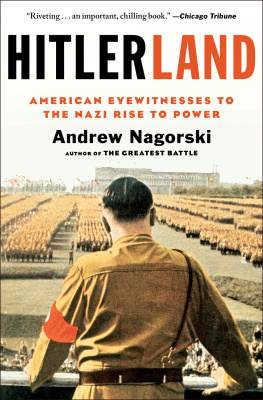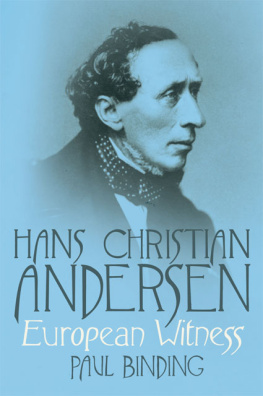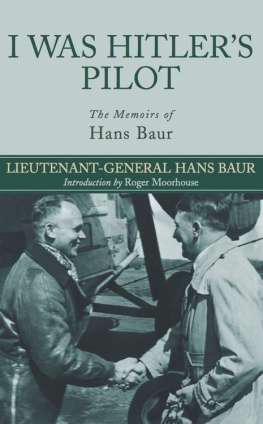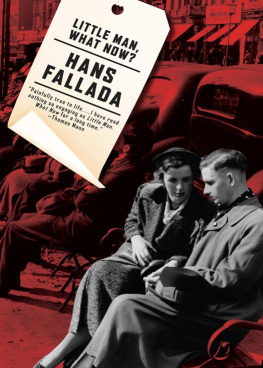CROSSING HITLER
CROSSING HITLER
The Man Who Put the Nazis on the Witness Stand
BENJAMIN CARTER HETT

2008

Oxford University Press, Inc., publishes works that further
Oxford Universitys objective of excellence
in research, scholarship, and education.
Oxford New York
Auckland Cape Town Dar es Salaam Hong Kong Karachi
Kuala Lumpur Madrid Melbourne Mexico City Nairobi
New Delhi Shanghai Taipei Toronto
With offices in
Argentina Austria Brazil Chile Czech Republic France Greece
Guatemala Hungary Italy Japan Poland Portugal Singapore
South Korea Switzerland Thailand Turkey Ukraine Vietnam
Copyright 2008 by Benjamin Carter Hett
Published by Oxford University Press, Inc.
198 Madison Avenue, New York, New York 10016
www.oup.com
Oxford is a registered trademark of Oxford University Press
All rights reserved. No part of this publication may be reproduced, stored in a retrieval system, or transmitted, in any form or by any means, electronic, mechanical, photocopying, recording, or otherwise, without the prior permission of Oxford University Press.
Library of Congress Cataloging-in-Publication Data
Hett, Benjamin Carter.
Crossing Hitler: the man who put the Nazis
on the witness stand / Benjamin Carter Hett.
p. cm.
Includes bibliographical references and index.
ISBN 978-0-19-536988-5
1. Litten, Hans, 19031938. 2. LawyersGermanyBiography.
3. Anti-Nazi movementBiography.
4. Criminal justice, Administration ofGermanyHistory20th century.
5. Political participationMoral and ethical aspectsGermany. I. Title.
DD247.L58H47 2008
943.086092dc22 2008004964
1 3 5 7 9 8 6 4 2
Printed in the United States of America on acid-free paper
For Corinna, another brave
idealist, with love
The more we know, the more we think we have learned, the more hopeless it becomes to live and not to be responsible for everything. For everything, and especially for what goes on in the small circle around oneself. That is why it is so difficult to write about Hans Litten.... I must tell the Hans Litten story very briefly.... But I will tell it, because he was a part of myself.
Max Frst, Gefilte Fisch: Eine
Jugend in Knigsberg, 1973
Contents
CROSSING HITLER
In the name of the private prosecutors I request the summoning of the following witnesses, began the document, a plain sheet of vellum paper, handwritten, the letters looping and even schoolboyish. The first of three witnesses named was the party employee Adolf Hitler, Munich, 45 Briener Street (The Brown House). Calling Hitler a party employee was deliberately demeaning. Hitler himself preferred to be called a writer, to enhance his independence and to distance himself from gritty partisan politics. Hitler was to supply evidence that there is no serious ban on weapons in the National Socialist Party; more important, that the Party had formed roll commandos, essentially paramilitary units whose function was to seek out and attack or even kill political opponents. Finally, Hitler was to confirm that Berlins Storm 33, a unit of the Nazis Storm Sections (Sturmabteilungen, or SA), was such a roll commando. The four defendants in this trial, the case against Konrad Hermann Stief et al., better known as the Eden Dance Palace trial, were members of Storm 33. At the bottom of the document was a signature: Litten. Advocate. The letters of the last name looped much larger than the rest of the text, conveying determination, pride, and perhaps even arrogance. The request was dated April 17, 1931.
That same tone breathes through a letter that this advocate wrote to his parents on May 7, 1931. I am lying in bed at the moment with the grippe, he informed them, which must without fail be cured within 24 hours, as tomorrow I will have the pleasure of cross-examining Herr Hitler personally in Moabit.
In May 1931 Hans Joachim Albert Litten had not yet reached his twenty-eighth birthday. Friends knew him to be shy, scholarly, and reserved. He had been practicing law in Berlin for all of two and a half years. Beyond a handful of youth movement activists and the small circle of lawyers and judges who frequented the criminal courts of Berlins Moabit district, he was unknown. Yet he had summoned the most formidable public speaker of his age and was preparing to take him on in rhetorical battle.
Who was Hans Litten? Years later his closest friend, Max Frst, remembered him as more than a brother... a part of myself, but also as a fanatical warrior who fought with the desperation of one who fights the last battle. Countess Marion Dnhoff, editor in chief of the weekly Die Zeit (Time), believed that Litten was one of those righteous men for whose sake the Lord did not allow the citythe country, the nationto be entirely ruined. Kurt Hiller, a friend from Berlin political circles and later a cellmate in a concentration camp, called him a true Christian by nature, and also by conviction. Another fellow prisoner was more sardonic: A definite genius, but not easy to live with.
Photographs show a serious, bespectacled young man, already growing portly and inclined to a double chin, with thinning hair combed back from a widows peak and worn unusually long for the time (Only soldiers and slaves get their hair shorn, he liked to say). He was tall: his closest friends small daughter remembered him as the big man with glasses, and a youth movement friend described him as a tall, pale young man. Beyond his height, the photos do not suggest
Max Frst had a similar recollection of meeting Litten, then seventeen, at a party in their hometown of Knigsberg, East Prussia: Hans, wearing a blue, very bourgeois suit, was leaning on the piano, a circle had formed around him... the conversation was cultivated. I had the suspicion that it was something involving Nietzsche. In any case, I didnt understand a word. A big boy with yet bigger glasses was his description. But like many others, Frst noticed that Littens brown eyes shone through the glasses with a sharp and penetrating effect. From ten miles away one could mark Hans Litten as an intellectual. But without the glasses, his eyes were the eyes of a dreamer, which looked more inward than outward.
In her later years his still-grieving mother would remind anyone who listened that Hitlers first victims were Germans, and there were many reasons why, almost from the beginning, the Nazis condemned Litten to imprisonment in a concentration camp, hard labor, prolonged interrogations, beatings, and torture. To the Nazis Litten was half-Jewish, as he was the product of what Germans in the early twentieth century called a mixed marriage. In politics he stood far to the left. And he was a lawyer, a profession for which the Nazis had scant regard.
But above all it was Hitlers personal fear and hatred that landed Litten in the concentration camps, and this fear and hatred stemmed from the handwritten summons of April 1931. For when Hitler appeared in court on May 8, Litten subjected him to a withering cross-examination, laying bare the violence at the heart of the Nazi movement. The Eden Dance Palace trial exposed Hitler to multiple dangers: criminal prosecution, the disintegration of his party, public exposure of the contradictions on which the Nazis appeal was based. It was only through luck that Hitler survived with his political career intact.
Next page











